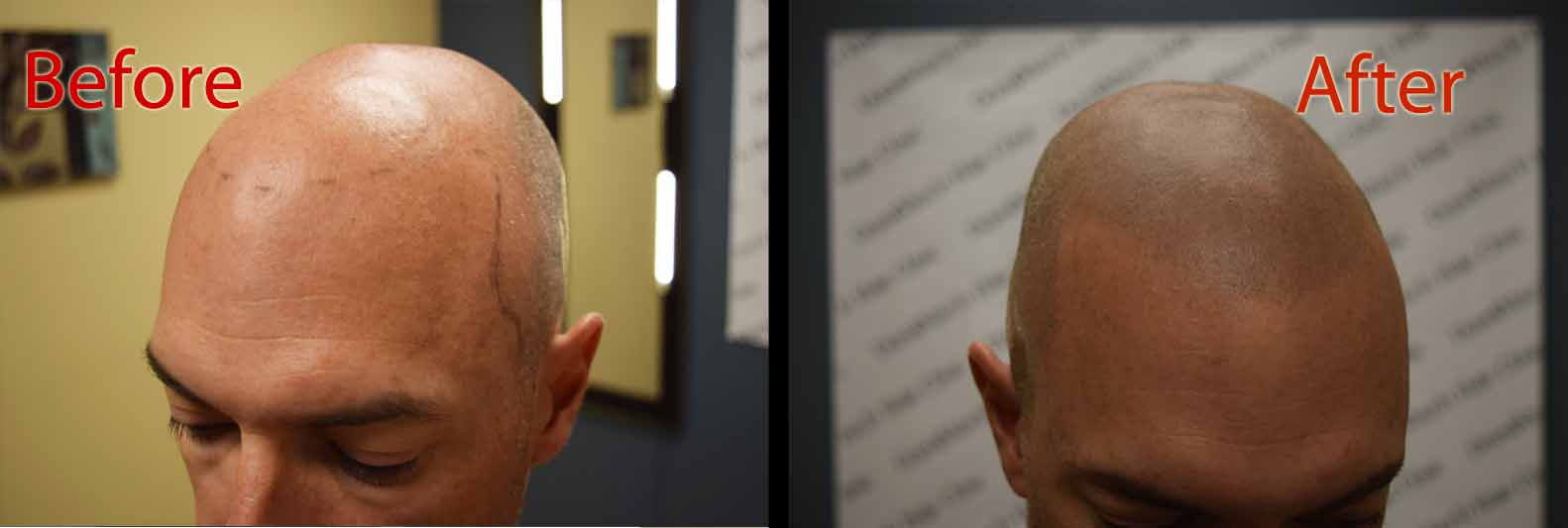Male baldness seems like an unfortunate reality. Many men experience hair loss due to androgenetic alopecia, which is a form of male pattern baldness. The condition results from their sensitivity to DHT, primarily due to hereditary causes.
Over time, DHT will shrink and degrade hair follicles, causing the production of thinner strands of hair. Gradually, they stop production, resulting in bald patches.
If you are genetically predisposed to hair loss, the balding process begins as early as the 20s or in the late teen years. Initial subtle thinning around the temples becomes visible for some men in their late teens.
Later Onset of Male Baldness
No doubt, balding starts early; not all men lose their hair young. Hair loss unfolds differently in each person, unique to the interaction of various environmental, genetic, and hormonal factors. It is better to catch the early signs and causes of baldness to curb the problem before it’s too late.
DHT binds to hormone receptors in follicles. As a result, they shrink over a period of time. Eventually, after years of thinning, the follicles stop producing healthy hair.
According to the Journal of the American Academy of Dermatology, genetic hair loss begins early, with 16% of surveyed men showing signs of balding around 18 years of age. The figure rises to 30% among men of 30 years of age. About 50% of men show signs of significant hair loss around 50.
The balding pattern begins with gradual thinning near the temples and crown. Gradually, the receding hairline takes on an M-shaped pattern as the balding spots spread and eventually join.
However, not all men experience baldness at an early age. The speed and severity of hair loss depend on various factors, including stress, age, and genetics.
Slowing & Preventing Progression
If baldness runs in your family, you, too, could experience genetic hair loss. The FDA has approved finasteride and minoxidil to prevent hair loss and baldness. The drugs block DHT, so blood circulation to shrunken hair follicles improves. When that happens, hair can regrow and thicken if applied early.
Topical minoxidil typically takes 2 to 4 months of application to show the effect on hair loss. however, excessive use could cause more hair loss and side effects. Besides, don’t be alarmed if you begin losing hair during the first 2 weeks of starting the medication. Initial hair shedding is a side effect of minoxidil use.
Is Minoxidil Better Than Finasteride?
Topical minoxidil is effective with regular use. But if you discontinue, hair loss may resume, and growth will subside. After discontinuing the medication, hair regrowth may stop completely after 3 to 4 months.
That means you need consistent use of the medication to see results.
What to do for Male Baldness?
Scalp micropigmentation might help if you are experiencing hereditary hair loss. But it is important to get help from top SMP professionals in Arizona who are skilled and experienced in scalp micropigmentation.
Arizona SMP artists at DermiMatch Clinic are experts in scalp micropigmentation and have helped thousands of clients overcome hair loss woes since the clinic’s inception.
Get help now if you are suffering from male baldness.

